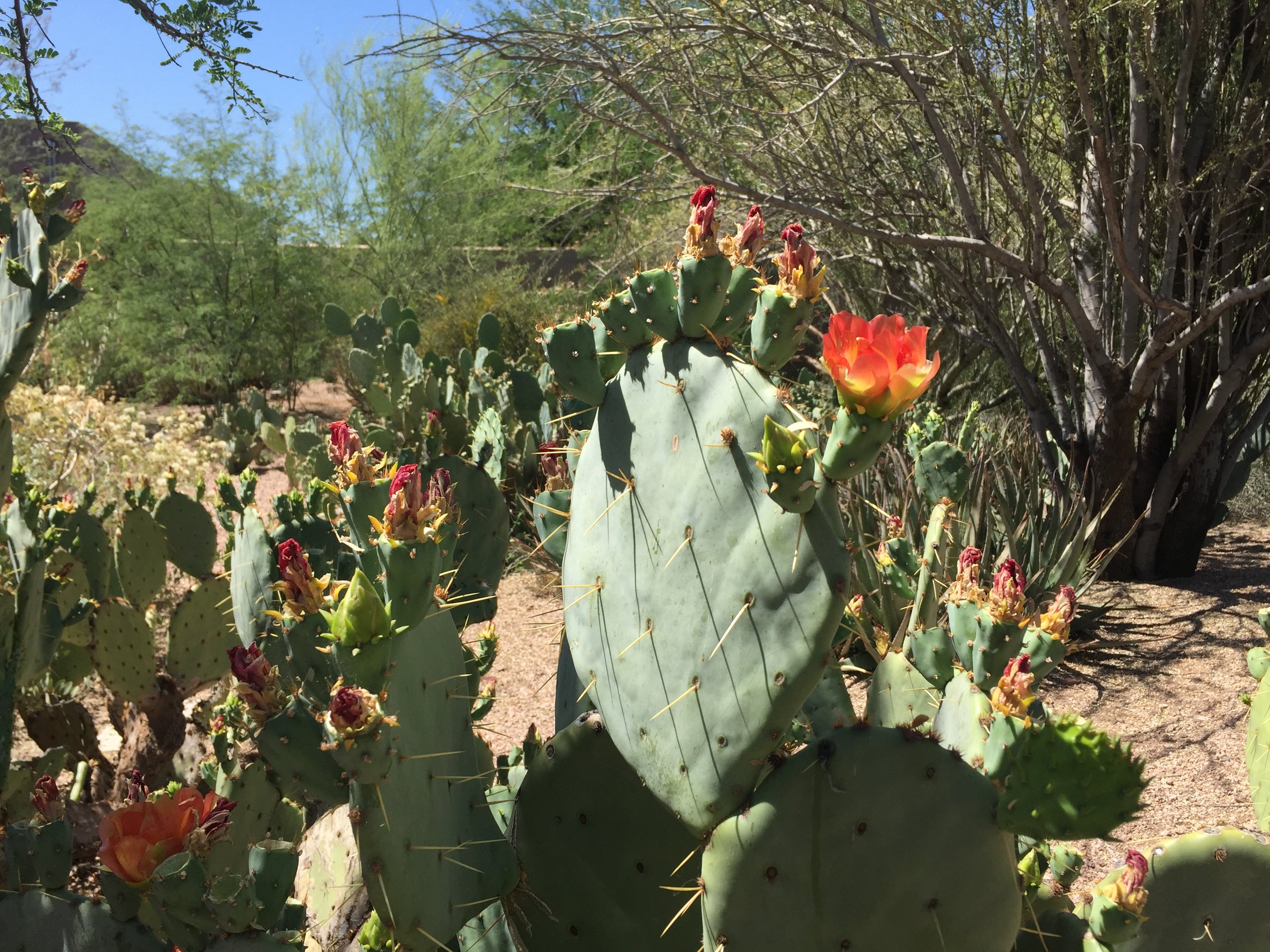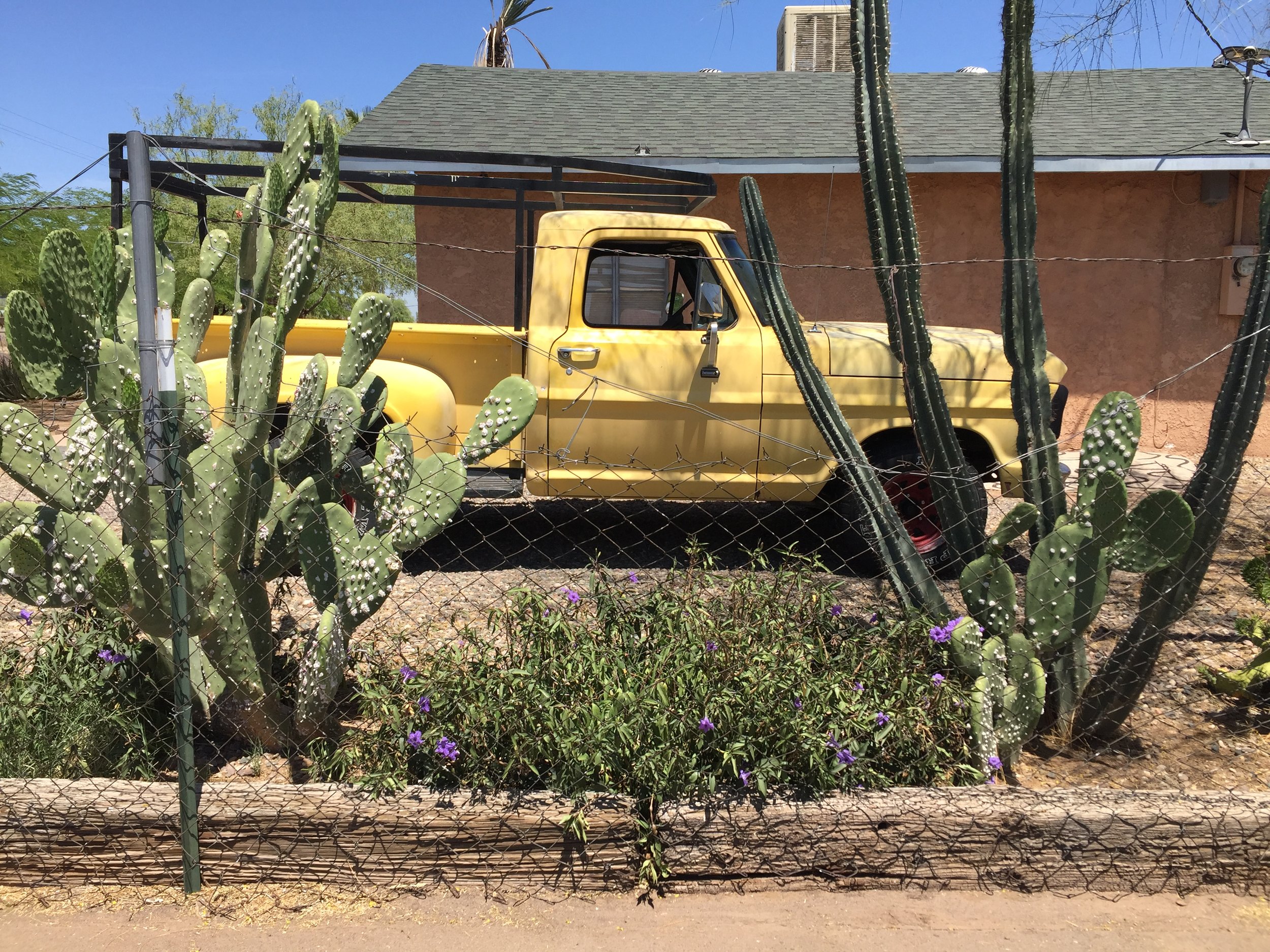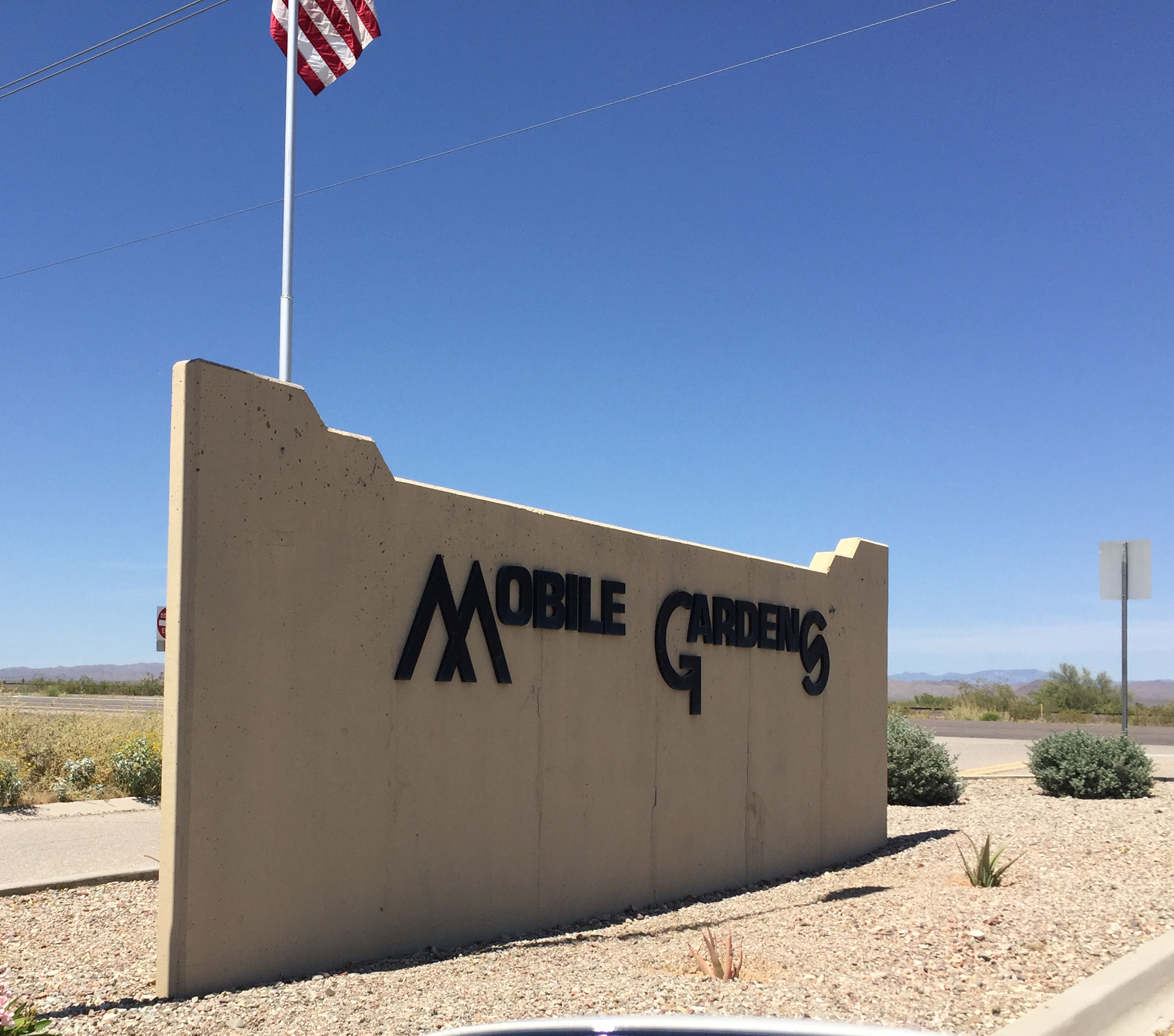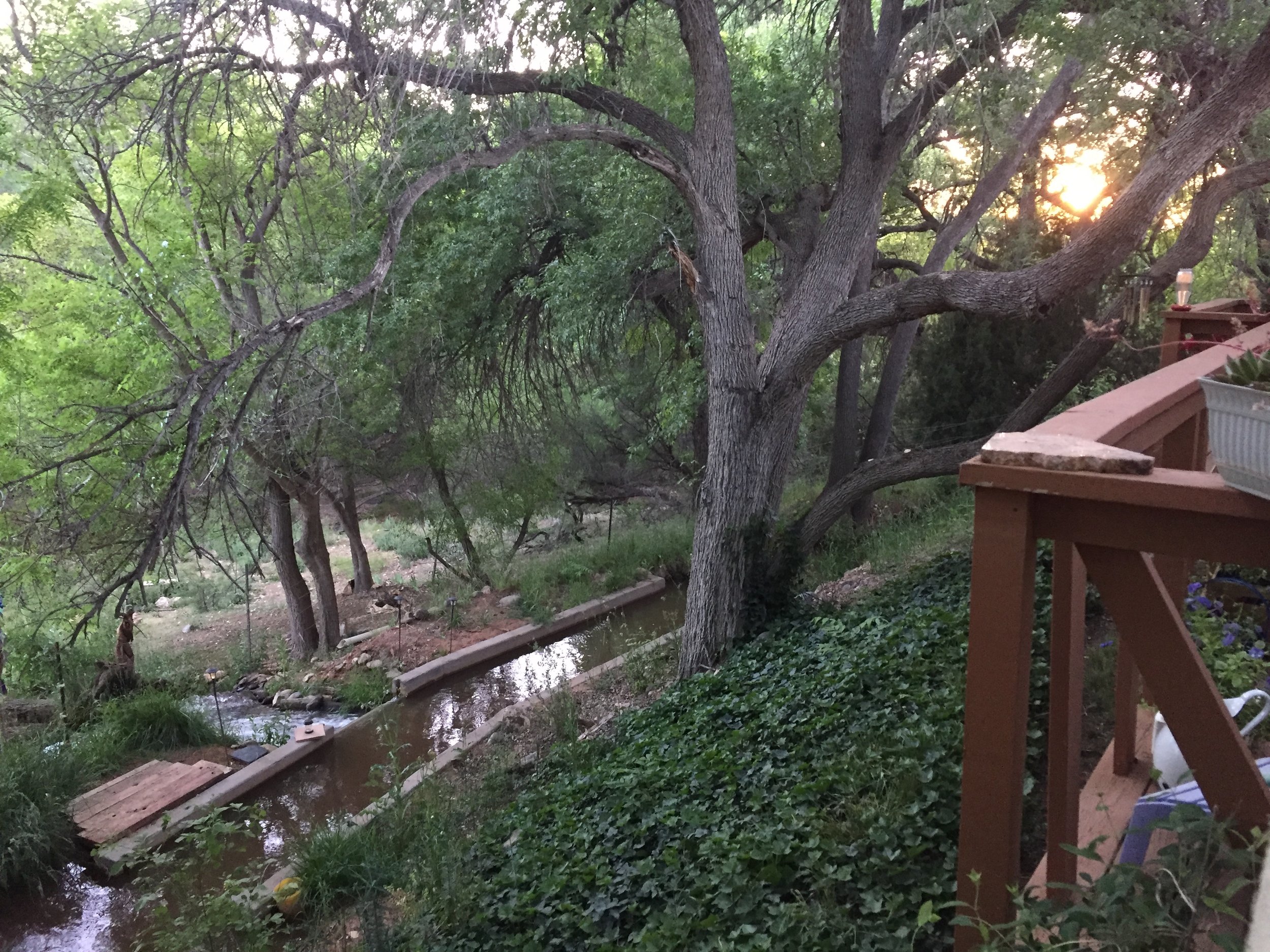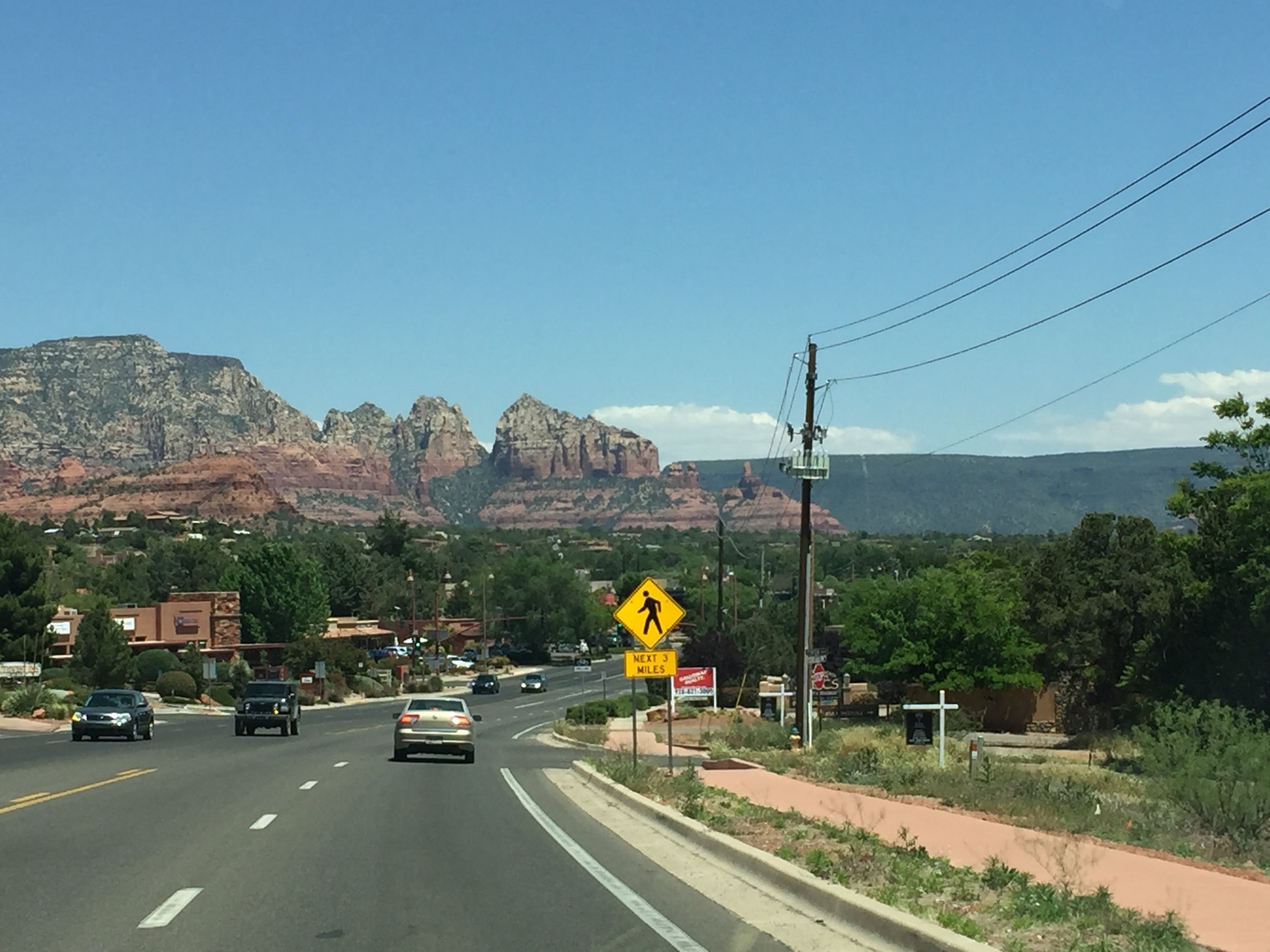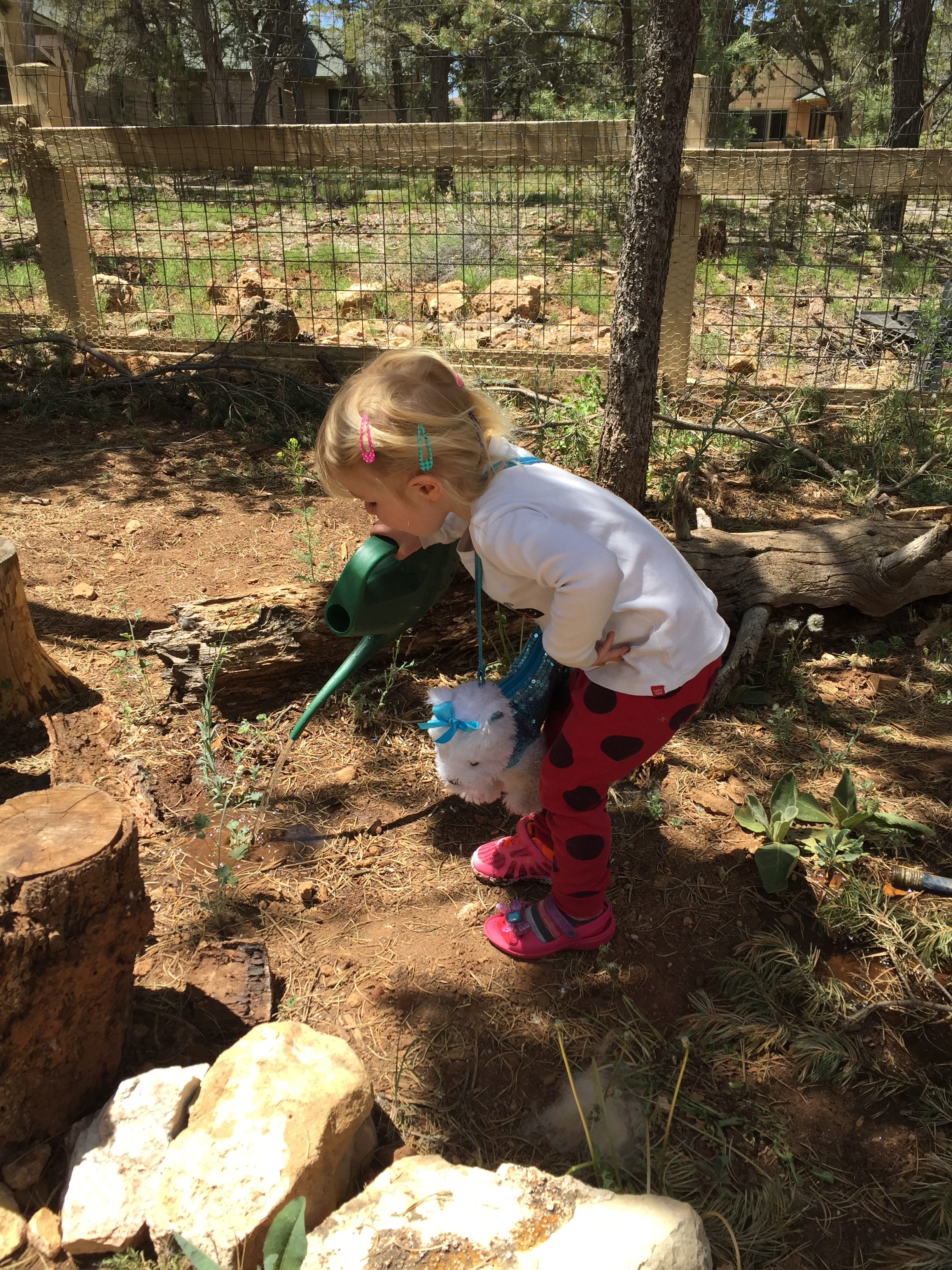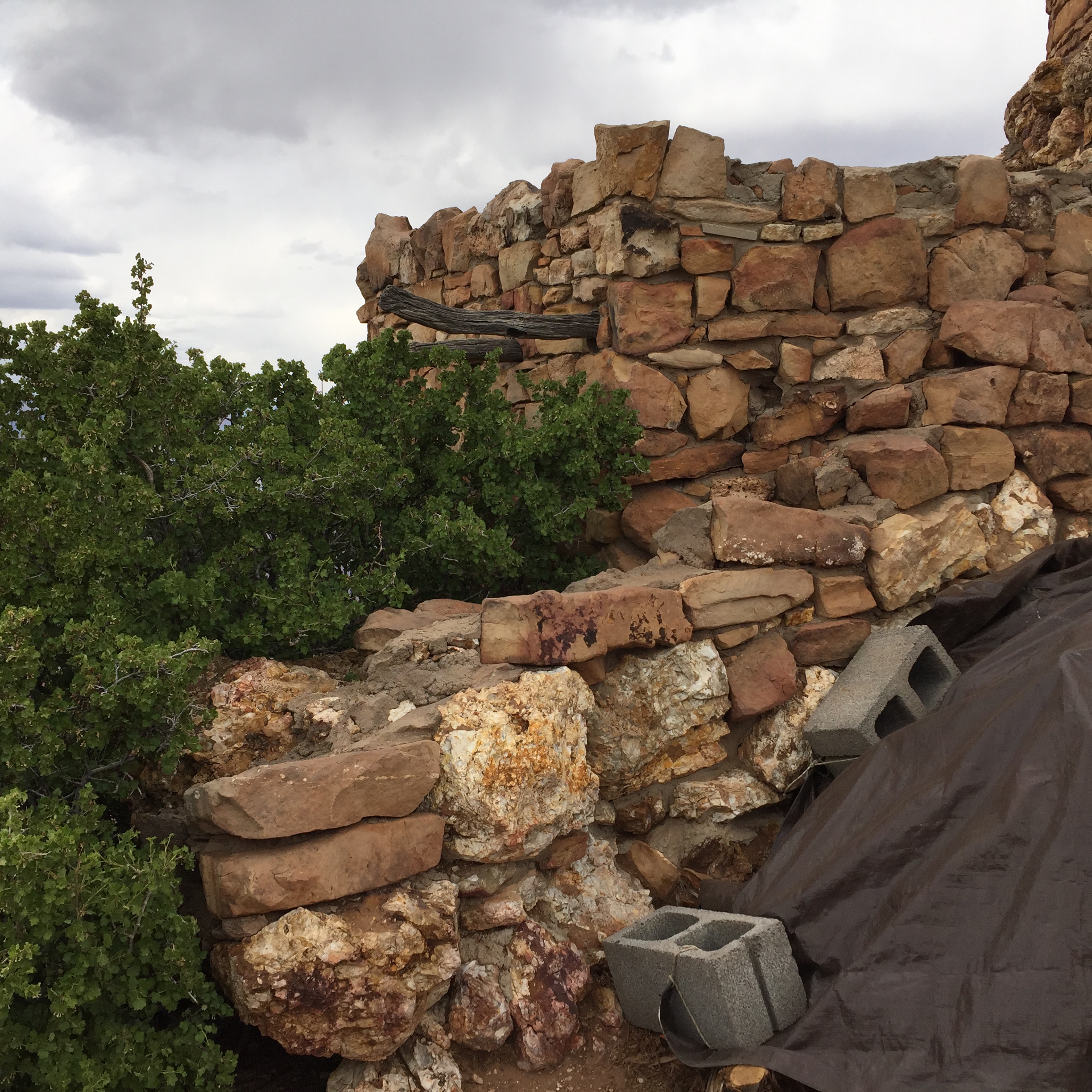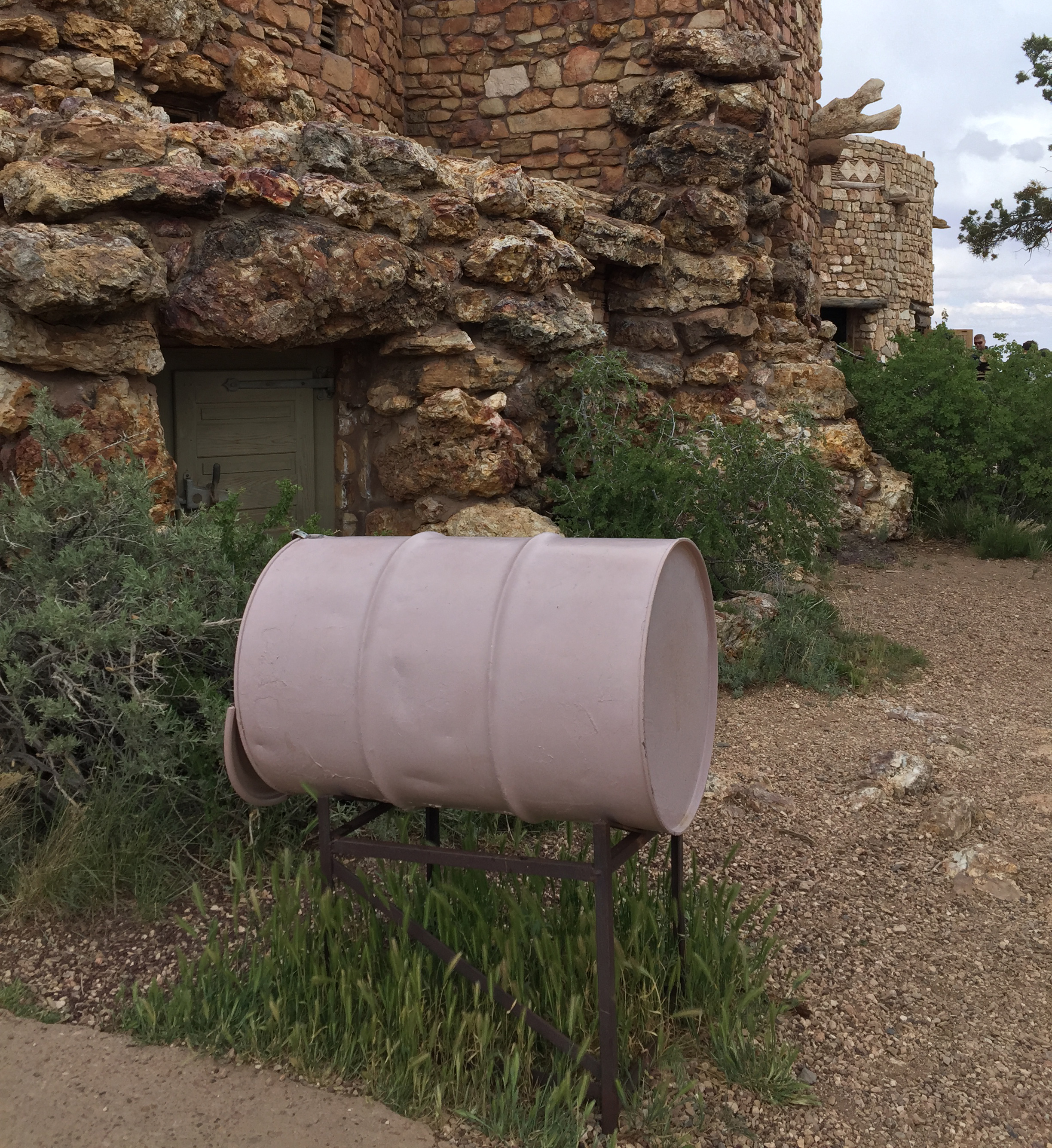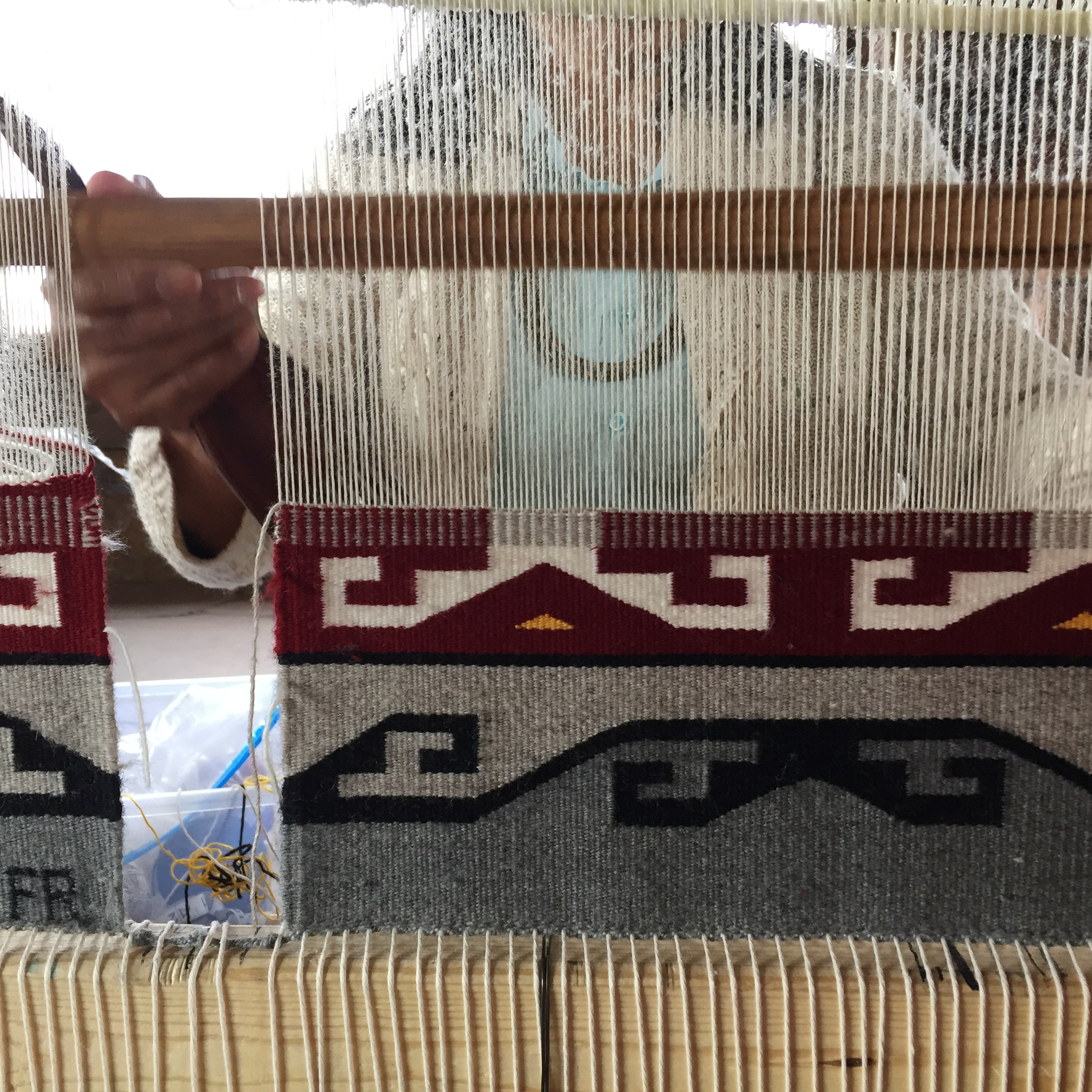pink = where I went
This was my first time in Arizona. My only prior connection to the state is ancestral. It is the state through which my maternal great-grandparents immigrated from Mexico.
Susanna (whom I'm named after) and José Robles came to the U.S. in 1917, after a flood devastated their ranch in Hermosillo, Sonora. With hopes of finding work as day laborers, they crossed the border with nothing but the clothes on their backs and their three children. They eventually settled in Los Angeles. My grandmother, Guadalupe, was their youngest of eight surviving children. I found myself thinking about Susanna and José a lot on this trip; about how the narrative of three generations and exactly 100 years has made my experience of this country so different than theirs.
I flew into Phoenix and stayed the night in an Airbnb - a bedroom in Paul and Harry's home in Scottsdale. Paul has a nice little patio garden in front, which he keeps as tenderly tidy as he does the rest of the house. I asked them the name of the lovely flowering tree in front and Harry spent the good part of an hour trying to find out for me.
We talked about being gay in our different generations and different parts of the country. Harry is originally from Boston and Paul Bangkok, but they moved to Arizona together from southern California. They do Airbnb with the extra bedroom in their home as a way to fund their love of travel.
I told them I was hoping to see some giant saguaros on my way out of Phoenix and they said I should go to the Desert Botanical Garden; that even if I didn't go inside I could see a lot wandering around the grounds. On my way there I drove through rock formations that looked other-worldly in their terra cotta skin folds and craters. I got out and went for a walk. Bushes with little yellow flowers were in bloom. I admired a giant, weathered saguaro standing its ground in the hot dry quiet, then looked up and found a grey bird with red cheeks sitting inside it, blinking at me.
The entry fee for the Desert Botanical Garden was $25 so I did not enter and just looked around the grounds like Harry suggested. Their saguaros and succulents were the well watered, flamboyantly blossoming cousins of the toughened ones out in the desert.
Harry and Paul said that for Mexican food I should eat at Carolina's sometime during my stay. (They told me the neighborhood it's in is often featured on the nightly news because of shootings and recommended I go in broad daylight.) I stood in Carolina's lunch line with a truly diverse crowd that seemed aglow in the comradery that is natural in a situation where you get excellent food for under $5. I thoroughly enjoyed my tacos, rice, beans, and salsa.
Then I walked around the neighborhood.
Before I left town I stopped by a Mexican grocery store, Los Altos Ranch Market. It reminded me of the store I used to go to with my Grandma in California.
I took my time driving to Cornville (near Sedona), where I would stay that night. I came across the biggest, happiest saguaros I saw on my whole trip - in a mobile home park in Wittmann, where people have made lovely desert gardens around their homes.
More scenes between Phoenix and Cornville:
There were confederate flags up on other structures around that little church.
I arrived in Cornville in the evening and met Maggie, who hosts people in rooms in her home and in tents on her property through Airbnb. She signs her correspondences "Maggie + the Critters." The critters include horses, dogs and cats - all of whom are as sweet and welcoming as Maggie, who gave me a warm hug upon meeting me.
In the morning she introduced me to her horses. Her beautiful mare Reiny nuzzled me for biscuits.
Maggie's place is appropriately named Peace Tree Sanctuary. My plan had been to get up early and spend the day exploring the famous sites of Sedona but instead I spent the morning enjoying this special place.
A little waterfall runs off a canal that goes through the property. From the little creek produced by the waterfall, Maggie has rigged up an irrigation system with PVC pipes to different parts of the land.
I also enjoyed other less functional but still purposeful arrangements.
Maggie told me about Sedona, as had two dear friends in Seattle who lived there for a while and were eager for me to visit. Originally a sacred place for many Native American tribes, Sedona is now a hot spot for the New Age community. Maggie explained that Sedona and the surrounding area have powerful spots of energy, generated by the earth itself, called vortexes. I was primed for an experience in a magical landscape!
As it turned out I only had about two hours in Sedona. Maggie told me about a swimming hole in Oak Creek Canyon so I decided to spend my time there, at Grasshopper Point. It was a beautiful drive through the canyon and then a short hike down to the swimming hole. When I got to the beach I stumbled onto a party in progress. Young men drank beer and ate Doritos and played loud country music that occasionally tried its hand at rap. I was there, in my swimsuit I'd clumsily changed into in the back seat of my rental car, but I wasn't there. I was swimming in the cold clear green water at the foot of steep red rocks. I was a fly on the wall at a frat party.
Scenes driving from Sedona to the Grand Canyon:
One of my dorm-mates from undergrad lives in the Grand Canyon (!) and she invited me to stay in her home there. Miranda and her husband Todd are both employed by the National Park Service - Miranda as a Wildlife Biologist and Todd as an Interpreter. They have a wonderful three year old named Theo, who decked herself out in her finest - hair styled with baby powder - to water plants and paint rocks. We read books together in the evenings.
In the morning I drove a few miles and parked at the visitor center, then walked to the edge of the south rim.
Vast many-colored beauty!
I was struck with the standing-under-a-starry-sky feeling of floating between infinite bigness and crushing smallness.
A very persistent squirrel attempted to join me for lunch. My girlfriend in undergrad was a wildlife major and so by extension I was schooled enough to know not to be swayed by this mammal's cuteness and enable its self-destructive habit. A man taking a picture a few feet away saw me using my chip bag to make noise and shoo the squirrel away and looked at me reprovingly and said "Little guy's just hungry." In defense of my hard-heartedness I offered, "The wildlife biologists in my life taught me not to feed them." He said, "But we're regular people, not wildlife biologists. We don't have to do what they do." I didn't know what to say to that.
I had thought I'd do a half-day hike and being someone who likes ample water and snacks, ended up with a rather heavy backpack. I felt virtuous rather than excessive (that came later) and validated by the signs everywhere that ask accusingly, "Did you bring enough snacks and water?" as in YES YOU and then provide graphs and charts to show you that YOU DIDN'T. Unlike the assumed average Grand Canyon visitor, I probably had enough water and snacks to reach the bottom of the canyon and back.
I knew altitude sickness was a thing but somehow thought that since I was young (i.e. younger than many of the hikers I saw bounding up the canyon with ease) and relatively in-shape (not true) and not a tourist (huh?) I would not experience it. I was stumbling around with my too-heavy pack for not very long before I got quite queasy. I kept trying to walk away from the bathrooms only to have to walk back... each time like, WHAT is going on? Look at all these tourists that do not appear to be sick! Miranda and Todd reminded me that night that I live at sea-level. And that altitude sickness is a thing. And I admitted that one's altitude and related sensations are none of them contingent upon one's motives for being in a place or the means by which one arrives there.
Anyway, I had a nice day walking around the rim near the bathrooms. I got to see the sunset, a magnificent gift I hardly believed I got to receive simply by being there. There are small gifts everywhere that don't care if you're worthy of them, but usually you have to look for them. This one was unabashedly grand, and it found me; jumped on me and pulled me in. And it glowed. Many shades of tangerine and lavender. Before driving back to Miranda's I sat in my car where I had cell service and called my family at home. I was about to start the car when a couple rode their bikes past my parked car. The guy asked the girl "How's your stomach now?" and she said, "Oh, better. I guess I just really had to fart." I was glad to know others were having gastro-intestinal reactions to the splendor.
The next day I drove east to the Watchtower at Desert View. The Watchtower is a structure that was conceptualized, designed and overseen through all stages by architect Mary Elizabeth Jane Colter in 1932.
Colter wrote a book that functions as a manual for understanding her creation for a very specific audience: [male] tour bus drivers and Grand Canyon guides. Despite being an excellent resource on prehistoric Southwestern architecture, the book has the feeling of a personal letter; its first words are a salutational "Dear boys." Beyond the act of creating this building, it was of great importance to Mary Colter that it be understood, and she didn't trust her luck that someone else would do the job of interpreting and educating for her. So she wrote a book. I grew more fond of her with every page I read. She wanted her work to be experienced in context and known for what it is as well as what it isn't: it is a unique, modern-era building inspired by prehistoric ruins of the Southwest; it is not a replica or restored relic.
The Watchtower and its surroundings were a visual feast with unexpected surprises around the back of the building, such as cinderblocks on a tarp covering firewood, a pink barrel on stilts, and walls with nooks and crannies.
On the ground floor of the watchtower, Navajo weaver Florence Riggs (Deer Spring Clan: Mother's Clan, Mexican Clan: Father's Clan) was sharing her process. I asked if I could sit with her and watch her and if I could take her picture. She said yes and I sat on the floor while she worked. It was surprisingly quiet in the room.
Wall paintings by Hopi artist Fred Kabotie cover the interior surfaces of the Watchtower. Climbing the stairs to the top is like moving through a painting.
The experience reminded me of the interior painting spaces I've had the privilege of putting my body in in Florence - the fresco-filled churches and monastery cells. The difference was that in Florence, I stood on the firm ground of years of Art History classes. Here, I was completely unprepared and mind and heart experienced an earthquake and tumbled around a little.
Feeling successfully not nauseous and bathroom-bound on this day, I then took a short hike to Shoshone Point. This hike isn't advertised or described anywhere in the park and there is no sign marking its trailhead. I'd read about it in a library book about the Grand Canyon before my trip, and then Todd told me it is one of the best views of the South Rim. After driving too far down the road and doubling back, I found the trailhead and went on the walk through woods that opens up at the edge of the canyon onto this view, which I had entirely to myself.
I asked Miranda to tell me about her job as a Wildlife Biologist in the Grand Canyon. She does some field work, some office work, some educational work, and a lot of strategizing and negotiating the intersections between humans and wildlife, which she has some great stories about. Once, a rattlesnake was hanging out at the front door of the visitor center; she used a "snake grabber" (!) to move it to safety. Another time a park visitor took a bat off a wall in the bathroom, brought it into the gift store, and handed it to the cashier. The visitor disappeared and the store keeper had to get a rabies shot. Miranda brought the bat out of the gift store and released it. She told me about these encounters like they were just ordinary days on the job. It was so good to reconnect with this friend after 20 years.
On the day I was to fly out of Phoenix, I left the Grand Canyon a different way than I had come so that I could visit Wupatki National Monument. Days ago in Cornville, Maggie had given me some rosemary from her garden to put on the dashboard of my rental car, which smelled strongly of new car smell. The rosemary released its smell as it cooked in the sun and was a comforting presence over the week.
The Wupatki Pueblo is the remains of a village from the 11th century. It was a kind of multi-use building whose modern-day equivalent might be a multi-storied apartment building with some Airbnb rooms and shops below. People from different regions would meet here to work, play, and gather for spiritual reasons.
I was especially taken with the blowhole.
The Blowhole is a human-made (11th century) portal to a naturally occurring crack in the earth of unknown depth and proportions. Depending on the quality of the air pressure outside, warm or cool air will flow in or out of the blowhole, creating wind. Standing over it is like feeling the earth as a body next to you, breathing.





